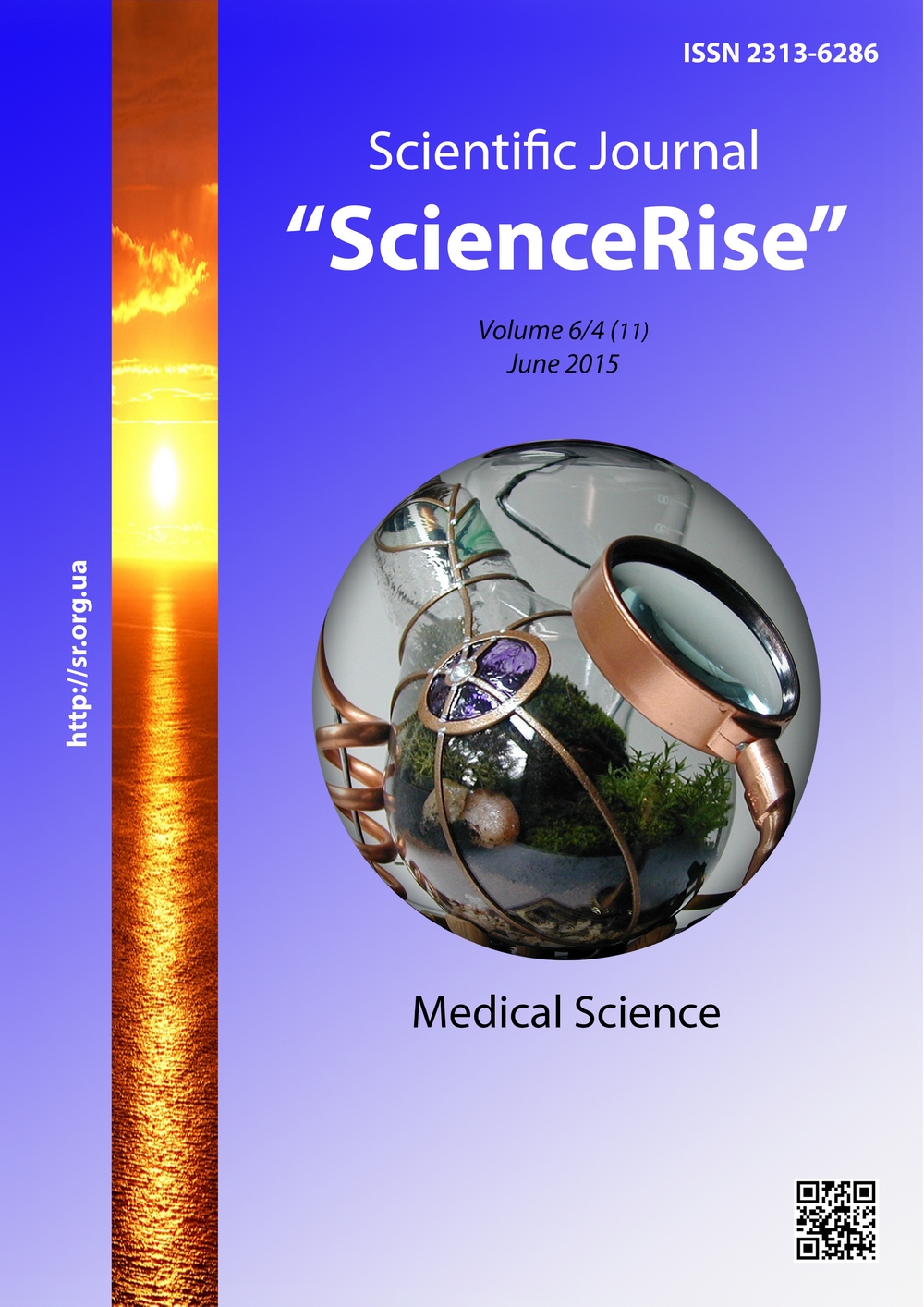The use of liposomal solutions of antibiotics in treatment of infected and festering wounds in children
DOI:
https://doi.org/10.15587/2313-8416.2015.45468Keywords:
infected and festering wounds, children, treatment, liposomal solution of ceftriaxoneAbstract
Aim of research. To study the use of liposomal solutions of antibiotics in the complex treatment of infected and festering wounds in children.
Materials and methods of research: The results of clinical and laboratory examinations of 77 children 3-18 years old with infected and festering wounds were analyzed. All children were distributed into groups of observation by the character of the treatment: in 37 sick children (the main group) liposomal preparations were used in the complex treatment. Patients of the control group (40 children) get the generally accepted complex treatment. The groups of comparison were statistically similar by the character and localization of pathological process, age, prescription of disease. In the main group an antibacterial-liposomal mixture was injected into the wound alongside with the generally accepted methods. The dynamics of the clinical, laboratory, cytological, bacteriological and morphological indicators was defined using the generally accepted technics. The general condition of patient’s organism was assessed with a help of laboratory methods of research (general clinical and biochemical analyses).
Results. In the main group it was observed a persistent tendency to normalization of leukocytal formula and of the number of leukocytes in peripheral blood that reached normal values (p < 0,05) on 7th day. In 36 patients of the control group leukocytosis remained for 7 days. Evident differences of indicators of leukocytal index of intoxication and of an index of the shift of leukocytal formula in the main and the control groups were observed on 3-4th day. In addition its decrease was combined with diminution of an intensity of clinical symptoms and with decrease of manifestations of the local pathological process.
Bacteriological examination of the nidus of inflammation in patients of examined groups revealed that in the main group the diminution of the degree of infectious contamination passed faster (p<0,05 – on first 3 days, p<0,01 – from the 4 day of observation. On the 3 day the number of microbial cells in 1 ml. of the wash from infected and festering wounds was 103 – 106 CFU/ml, on the 4–6 day was lower than 103 CFU/ml.
Conclusions. After 3 days of treatment wounds with liposomal solution of antibiotics the faster rates of normalization of clinical and laboratory and cytological indicators were reliably fixed in 67% of patients from the main group in comparison with the control one. The use of liposomal solutions of antibiotics in the complex treatment of infected and festering wounds in children results in intensification of biosynthetic activity of cells, reparative processes in the wound area, fastens formation of granulation tissueReferences
Vіltsanyuk, O. A. (2009). Complex lіkuvannya gnіyno-ignition process m'yakih tkanin sprichinenogo klostrіdіyami that neklostrіdіalnіmi normal body mіkroorganіzmami. Klіnіchna hіrurgіya, 11, 42–43.
Lіgonenko, O. V., Dіgtyar, І. І. (2010). Vikoristannya kombіnovanoї estrogenolіposomalnoy terapії in integrated lіkuvannі seed-gnіynih urazhen m'yakih tkanin have ailments that Pokhil senile vіku. Ukrai'ns'kyj Zhurnal Hirurgii', 1, 81.
Logatchev, V. K. (2010). Theory and practice of local treatment of purulent wounds. Klіnіchna hіrurgіya, 11, 51.
Bagrіy, O. S., Godlevsky, A. І., Bєlkanіya, G. S. (2002). Dinamіka mіkrotsirkulyatornogo vіdobrazhennya zagoєnnya pіslyao-peratsіynih. News Vіnnitskogo sovereign medichnogo unіversitetu, 2, 416–422.
Zhelіba, M. D., Prevar, A. P., Funіkov, A. V. (2005). Optimіzatsіya complex lіkuvannya GOSTR gnіyno-ignition zahvoryuvan m "yakih tkanin. Mat. NAUKOVO-praktichnoї konferentsії mіzhnarodnoyu s participation "Rani m" yakih tkanin that Ranova іnfektsіya”. Kyiv, 28.
Oborotova, N. A., Tolcheva, E. V. (2010). Liposomes as a vehicle for bioactive molecules ostanoski. Russian biotherapeutic zhurnal, 1, 54–61.
Pashkov, E. P., Shvets, V. I., Sorokoumova, G. M., Ivanova, M. A., Aleksandrov, M. T., Kiyamov, A. K., Kurilko, N. L. (2009). Action liposomes and liposomal form of ceftriaxone in the healing of skin wounds in rats. Antibiotics and chemotherapy, 5-6, 25–30.
Dudnichenko, A. S., Krasnopolskiy, Y. M., Shvets, V. I. (2001). Liposomal drugs in experiment and clinic. Kharkov: RA-Caravelle, 143.
Kreines, V. M., Melnikov, V. M., Margolin, Y. M., Melyantseva, L. P. (1990). Anti-inflammatory effect of liposomes. Bulletin of Medical Sciences of the USSR, 6, 44–47.
Downloads
Published
Issue
Section
License
Copyright (c) 2015 Олег Владимирович Спахи

This work is licensed under a Creative Commons Attribution 4.0 International License.
Our journal abides by the Creative Commons CC BY copyright rights and permissions for open access journals.
Authors, who are published in this journal, agree to the following conditions:
1. The authors reserve the right to authorship of the work and pass the first publication right of this work to the journal under the terms of a Creative Commons CC BY, which allows others to freely distribute the published research with the obligatory reference to the authors of the original work and the first publication of the work in this journal.
2. The authors have the right to conclude separate supplement agreements that relate to non-exclusive work distribution in the form in which it has been published by the journal (for example, to upload the work to the online storage of the journal or publish it as part of a monograph), provided that the reference to the first publication of the work in this journal is included.

